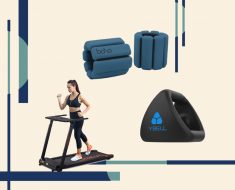
Written by Dan Ternes, Chief Technology Officer, Asia-Pacific, Blue Prism
In the world of healthcare and hospitals, no two days are the same. Very often, however, the underlying challenges that shape those days are common. Hence why staff satisfaction, patient experience, financial sustainability, and effective treatments done efficiently are all challenges headlining a boards’ agenda. Particularly so in light of the pandemic and the pressures that have been wrought on the healthcare community.
In tackling these ailments effectively, some organisations are thinking outside the box with intelligent automation.
I’m writing this blog to demonstrate how some of our most innovative customers are injecting a healthy dose of automation into their core functions so that their people can cease acting as administrative robots and use their amazing human qualities instead.
Streamline Clinical Workflows with Intelligent Automation
Streamlining and improving how clinical processes are performed is fundamental to ensuring patients get maximum value from their healthcare experience. Central to this is giving clinicians the ability to do more for their patients while spending less time and effort completing routine, non-patient-facing tasks.
Many healthcare organisations across the world have turned to automation to do just this, using digital workers to handle the behind-the-scenes work that is fundamental to patient outcomes, but that removes clinicians from their primary task (and goal!) of administering care.
By acting as the glue between core systems, digital workers enable data to pass seamlessly from application to application, ensuring it’s in the hands of those who need it when they need it. This means that rather than having to request information from other departments or searching through countless records to find what they need, clinicians have the information they need to make informed decisions around patient care and treatment.
Here are some great examples and case studies that show what happens when you add imagination and intelligent automation to clinical workflows:
- BUPA – Digital workers have processed over 800,000 emails, including test registration and results notifications for over 370,000 tests allowing homes to respond quickly and prevent the spread of infection.
- NUHS – COVID-19 test registration time decreased from two minutes to 30 seconds per test, saving the NUHS 18 work hours every day.
- Royal Surrey NHS Foundation Trust – Appointment rebooking service and Did Not Attend processes are revamped: helping them with backlog prevention and in ensuring patient care is prioritised.
Expedite Patient Processing with Intelligent Automation
How patients access and move through the stages of their care is a core component of their experience, and often defines their perception of the care provider. With that in mind, ensuring they’re able to access services conveniently, and their records are processed safely and efficiently are central pillars to their experience. But with a complex array of systems to contend with, ensuring patient processing goes off without a hitch is easier said than done, or is it? Digital workers enable healthcare organisations to provide a “digital front door” to their services, and move patient information between systems effortlessly, avoiding processing bottlenecks and backlogs that detract from patient value.
Here are some client case studies that shows what happens when you just add imagination and intelligent automation to Patient Processing:
- Ohio’s Hospice – 24,000 hours given back to the business following the automation of hospice patient onboarding
- Connect Health – 100,000 patient registrations handled digitally in 18 months with digital works automating the patient pathway cycle right through to discharge.
Supporting HR, Finance & Logistics Functions with Intelligent Automation
It goes without saying that Finance, HR, and Logistics departments are what keep healthcare organisations moving. From ensuring personnel are well looked after, to making sure wards are equipped, hospitals would quickly grind to a halt without the support of these key functions.
But to say Blue Prism makes these operations straightforward would be misleading. We know that with so many systems, processes, and stakeholders to contend with, there’s no silver bullet to make all your problems go away. What we do bring to the table, however, is the ability to significantly reduce the complexity of your core processes, saving your staff time and your organisation money in the meantime.
And finally, here are some examples to show what happens when you add imagination and intelligent automation in HR and Finance:
- Kings Facility Management – Time reduction of 63% between order to delivery of goods
- Mercy Radiology – $200,000 enhanced cash flow every month using automation
- Healthcare Holdings – Employee onboarding from 45 minutes to 1 minute
Want to know more on how you can prepare to kick-start a successful intelligent automation programme? Our ebook here details these guidelines and best practices that our healthcare users have put in place from the preparation, right to post deployment.
Source: Read Full Article





